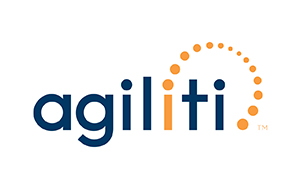Key learnings from the pandemic and plans for the future
COVID-19 has significantly disrupted almost every aspect of healthcare delivery. Two of the most challenged areas are supply chain and medical equipment management. As healthcare organizations race to establish the appropriate equipment inventories needed to treat patients and keep doctors, nurses and other healthcare workers safe, they’re encountering new problems that require innovative solutions. In this roundtable, senior healthcare leaders discuss how the pandemic impacted their approaches to equipment and supply acquisition and how it’s shaping their their plans for the future.
What are the top lessons learned from the first wave of COVID-19 regarding the acquisition and management of essential equipment and supplies?
Daniel Collins: When COVID-19 hit in mid-March, Orlando Health’s first goal was to stock up on personal protective equipment (PPE) as quickly as possible. However, we also tried to use as few vendors as we could to receive bulk purchasing discounts. The trouble with this approach was that the vendors from which we bulk purchased eventually ran out of supplies, leaving us to scramble and vet other vendors on the fly. We thoroughly review a vendor before we ever make a purchase, requiring a W9 and no reported issues on the State of Florida’s Vendor Information Portal. It was a mad scramble during March and early April to get all the necessary vendors on board. The takeaway here is that it can be helpful to diversify the number of vendors you purchase from, and bulk pricing might not always be the best method for acquiring emergency supplies.
Jason Kell: USC Verdugo Hills Hospital is a relatively small, community hospital. We provide emergency department (ED) and obstetrics services, but when it comes to isolation patients, historically we had low volumes. As we prepared for what we thought a surge would look like, our supply chain vendor capped our allocation at 90% of our historic use. We had to get creative on sourcing. Luckily, we had a lot of donations to bridge the gap. We weren’t forced to go out and acquire PPE — folks donated it from verified sources. That helped carry us through until the supply chain stabilized in May.
Martin D’Cruz: Baptist Health had purchased a good amount of PPE, but then we had situations where the Centers for Disease Control and Prevention (CDC) intercepted our supply.
Shawn Nelson: At Riverside [Health System], we discovered we couldn’t rely on supplies that were being divvied out from the national stockpile due to the age and expiration dates of those supplies. Many of them had deteriorated and were simply unusable.
Kell: We noticed that even if our supplies landed in the port of Los Angeles, they were held up in customs for a while. After experiencing that, we learned to ask about where the materials would land and be stored. Early on, we also had to monitor and educate caregivers on proper PPE use. We found that many were double gloving at the start of the pandemic, and we had to remind them that one glove is sufficient and double gloving would burn through our supplies.
Fred Wilson: We saw 10 times our historical PPE utilization during the early parts of the first wave even though we had a comparatively small volume of actual COVID cases at that time. We were somewhat decentralized on where we kept and stored PPE supplies like hand sanitizer and masks. We decided early on to pull PPE supplies out of public areas and establish what we called PPE depots, where we had a line of sight of critical supplies and full control of the distribution responsibilities. We identified PPE “czars” who went out on the floors to look for inappropriate utilization patterns and provide counseling, so we could remediate inappropriate use quickly. We curtailed most of the unnecessary use before we got into the second wave, when we were able to better manage the distribution channel of our stockpile and PPE inventory.
Nelson: Another area we initially focused on was how to effectively communicate with the community about helpful donations. The outpouring was tremendous, and our community propped us up and helped throughout the entire situation. However, certain things were being donated that we couldn’t use initially, and we didn’t want healthy people coming to our facilities unnecessarily and risking infection. Then two months in, we changed our tune a little bit. For example, as we started face-masking every resident in our skilled nursing facilities and retirement communities, we had to change our perspective on cloth masks and communicate with the community about our changing needs.
Tom Boehning: COVID-19 quickly revealed several opportunities to improve the way medical equipment is procured and distributed. As health systems went into high-preparedness mode, we saw situations similar to the ones you all described — a rush to acquire as much equipment and supplies as possible to meet the expected demand. For instance, we had large health systems calling us saying, “we’ll take every ventilator and infusion pump you have,” which was tens of thousands of devices. We had to figure out how to equitably distribute our equipment to hot spot areas while also mobilizing our biomedical technicians to meet the rising maintenance and repair needs.
How did your organization address the financial, clinical and operational challenges experienced during the first wave?
Collins: For our medical group, the number of patients visiting our practices went way down during the first wave. April was one of the worst patient volume months I’ve ever experienced. This compelled our organization to pursue a redeployment strategy. Individuals chosen for redeployment were still paid their same rate, but they received another role, possibly at another hospital or medical practice. Some team members went to the redeployment pool and did not receive a new assignment. We eagerly look for a new role for these team members when an opportunity arises. Another thing we had to address was the fear our patients had in visiting our practices in person. The adoption of telemedicine was key for us to maintain some sort of revenue flow. The reimbursement of those telemedicine visits at regular E/M levels was helpful for all our practices.
Nelson: Riverside made the commitment that we would not lay off or furlough any employees for as long as possible, and we’ve made it so far without any widespread staffing changes. We redeployed employees and we also repurposed some facilities. For example, our wellness centers had to shut down. They were not allowed to be open due to the governor’s orders. We repurposed those facilities to be childcare centers for our employees because many staff members could not take their children to daycare or schools that were shut down. This strategy not only benefitted our health system employees, [but it also] kept our wellness center staff employed as well. This is one of those times where having the full continuum of care benefited us and played to one of our strengths.
Kell: When the pandemic hit, we asked all our volunteers to leave, and we relied a lot on our volunteers. Staff became runners, brought equipment up to the floors, worked our temperature checking stations, flexed to different units depending on census and went through cross training. We shifted our tertiary nurses to medical/surgical care. By flexing our employee census, we were able to better prepare for the unknown without have to go through furloughs.
D’Cruz: We did have to furlough some employees; however, some are returning to the organization at this point. In addition, our health system leaders are reducing their salaries. Anybody at the vice president level took a pay cut. I think this shows our employees that leadership is doing everything we can to preserve jobs. In addition to staffing changes, we’ve been working closely with our payers to accelerate payments to 30 days. Some payers are also willing to provide upfront loans. I’ve also been working to integrate financial and clinical teams using Zoom and conference calls. This has been effective at improving claims accuracy and reducing denials, but we still have a long way to go.
Boehning: We pursued similar strategies to what you’ve each mentioned. Our teams are on the frontlines every day, delivering equipment to hospitals, moving equipment between departments and providing onsite biomedical engineering support. As volumes surged, we had to quickly determine how we could continue to operate safely and effectively. However, this also helped us to uncover new ways to mobilize our operators to impacted areas across the country. For example, we have a business line that provides surgical lasers with technical support. The reduction in non-emergency surgical procedures temporarily reduced the demand for these services. So, we reassigned those equipment professionals to assist our technicians who were delivering equipment or providing biomedical engineering support. We wanted to make sure we could meet the rapidly changing needs of health systems and their staff, which required us to adapt and shift talent to areas where it was
needed most.
Describe your plans for achieving scalability, flexibility and stability in supply chains for the second wave of COVID-19. How are you predicting needs and planning to meet them?
Wilson: None of us can truly predict what the next wave will look like, especially as the flu season emerges. That said, we need to figure out alternative ways to meet demands if our supplies aren’t able to keep up, and we must increase stockpiles and PPE on-hand inventory levels now. Even though our COVID volumes are starting to decline, we’re continuing to maintain our ordering patterns relatively high as we head into the fall. Hopefully, we will have adequate supply to meet the demands should we see another wave. That’s the only thing we can do at this point: prepare for what we already have experienced and hopefully it doesn’t happen again.
Kell: One of the challenges we had is that our infrastructure was outdated in terms of fully understanding what supplies we had and where we had them. Initially we created simple dashboards and looked at our average daily use. Then we considered what would happen if our usage increased by a certain percent, and we tried to determine when we would run out of supplies. Just using that as a gauge was helpful to make sure that we had a secure supply chain if we did have a surge. Now, we are a little more sophisticated at analyzing our usage peaks, and we update that information daily.
Collins: Florida is on the downside of wave two right now. March and April weren’t much of a wave one for us, but wave two has been serious. About mid-June, we started to see hospitalizations increase. They peaked in mid-July and [August] a downward trend. To keep tabs on supplies, we send a dashboard to all team members regarding vital PPE items. It uses stop-light methodology, and we look at 45-plus days on hand. For instance, if disposable N95 masks are more than 45 days on hand, we’re in the green; if we’re between 31 and 44 days, we’re in the yellow; and if we’re below 30 days, we’re in the red, which prompts us to see where we can stock up for that hospital as quickly as possible. During wave two, we also discovered our infrastructure was a little outdated. It was hard for us to pull real-time data, especially for items we have in our warehouses. We created a more detailed inventory and classification system, which helped immensely.
Nelson: We also feel like we’re in the middle of wave two now and are concerned that wave three may come in the fall, or maybe wave two will never end and just become wave three. One of the things we’ve done is partner with a large PPE supplier. We’ve taken a stake in the company so we can utilize and leverage the relationship going forward. Hopefully, we’ll have a PPE supply for whatever comes, not just during the pandemic, but as we face other crises in the future.
What are some of your predictions going forward from a financial, operational and clinical perspective?
Kell: Long-term, our focus is on how to store our increased inventory. We have had to rent big trailers because we don’t have the physical plant to store it. Now we are wondering whether we need to get a warehouse and build that inventory. From a regulatory perspective, California’s legislature is considering requiring hospitals to have a year of PPE on hand. We are trying to address those challenges and get more creative in how we store equipment and not rely primarily on inventory management.
Collins: We’re trying to figure out the best ways to support our medical practices. Our practices saw volumes come back in June after Florida lifted the ban on elective surgeries. By the end of the year, we’re projecting about 95% to 96% of pre-COVID volumes. Some areas are coming back quicker than others. For instance, our primary care pediatricians are struggling to get back to normal. As I mentioned before, we’re offering telemedicine to bridge the gap. Some parents don’t want to bring their kids in for a well-visit, so if we can offer a similar experience via a telemedicine application, it can help bring back some
of that volume.
D’Cruz: Patient safety is becoming more critical in the sense that only 40% of our patients feel comfortable coming to the hospital. Our emphasis continues to be on patient safety from a clinical perspective to help drive people into the hospital and get our volumes back on track.
How are you rethinking your supply chain and equipment inventory needs for 2021 and beyond?
Wilson: We’re aiming to be more self-reliant and pursue domestic sourcing. We’re also looking at how to use our enterprise network to redistribute and leverage the resources we already have. We’re migrating towards pooling resources along with our group purchasing organization (GPO), and we hope to acquire warehouse space that allows us to stockpile for self-reliance in the future.
Boehning: The pandemic is changing how many organizations view emergency preparedness and inventory management. We are currently working with health systems to develop and implement new inventory management processes that better mobilize vital medical equipment across a network of hospitals. This involves standing up centralized maintenance and storage locations and providing logistical support to meet variable demand, allowing them to focus less on equipment acquisition and rental, and more on deploying their existing inventory more efficiently.
Wilson: Going forward, healthcare organizations need to hardwire emergency preparedness and readiness into their operations, whether it’s for weather disasters — which we experience in south Florida quite frequently — chemical explosions, mass shootings, pandemics, and so on. These are things we’ve got to be ready and prepared for. Our teams, by the nature of what we do for a living, will always be
relied upon to respond to these types of situations, and we need to make sure
we’re prepped and have contingencies
plans in place.
Kell: The challenge is that most emergencies have beginnings and ends. Dealing with a pandemic requires more of a marathon mentality. We have to be disciplined, focused and able to handle the disruptions for an unforeseeable duration. I think that’s been the largest challenge in this whole thing. The logistics we can figure out. We’re changing from local, temporary storage to having supplies stored offsite and activating transportation when needed. We’re re-examining just-in-time strategies. All those things are tactical. But the human aspect is the most challenging. Dealing with our staff and leadership’s mental fatigue. We don’t know when this is going to end. And what if we have a spike in the community? What does that look like? How do we interact with each other?
Boehning: It’s tough to know what the future will bring because the impact of COVID-19 has created new realities for us and healthcare across the country. We think moving forward that health systems are going to need to find ways to plan for — and even predict demand — so that they can quickly scale their operations to support spikes in patient volumes. While we’re learning more every day and identifying places, we can make key improvements, doing nothing isn’t an option. Without the right infrastructure or processes in place, we know health systems and hospitals are going to be challenged to manage higher inventory levels and ensure vital medical equipment is readily available to frontline caregivers. I think we will all be better in the next wave as we determine which processes and partnerships help us deliver the most responsive and accessible supply chain and medical equipment strategies, and I’m optimistic we’re going to find the right balance moving forward.

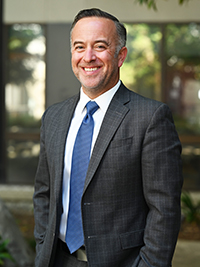
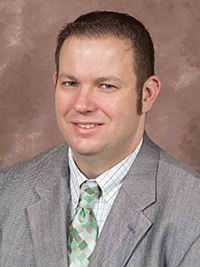
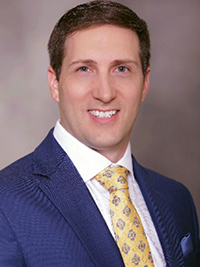
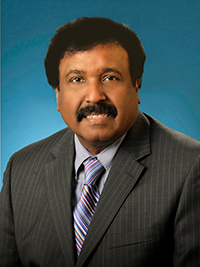
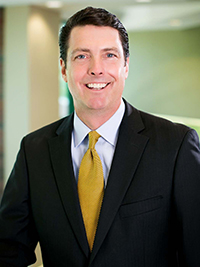
About Agiliti
Agiliti is a company of 3,000+ passionate equipment management experts who believe every interaction has the power to change a life. The company is dedicated to supporting optimal clinical outcomes while lowering equipment management costs for hospitals and health systems across the U.S. Agiliti ensures the right equipment is in the right place at the right time — from infusion pumps to beds to surgical lasers — so physicians, nurses and other caregivers spend more time focused on patient care. They also provide supply chain teams with access to medical equipment rentals maintained to the highest quality standards and a full range of clinical engineering services — from supplemental support to fully outsourced programs — to unburden healthcare technology management teams.
This published piece is provided solely for informational purposes. HFMA does not endorse the published material or warrant or guarantee its accuracy. The statements and opinions by participants are those of the participants and not those of HFMA. References to commercial manufacturers, vendors, products, or services that may appear do not constitute endorsements by HFMA.






